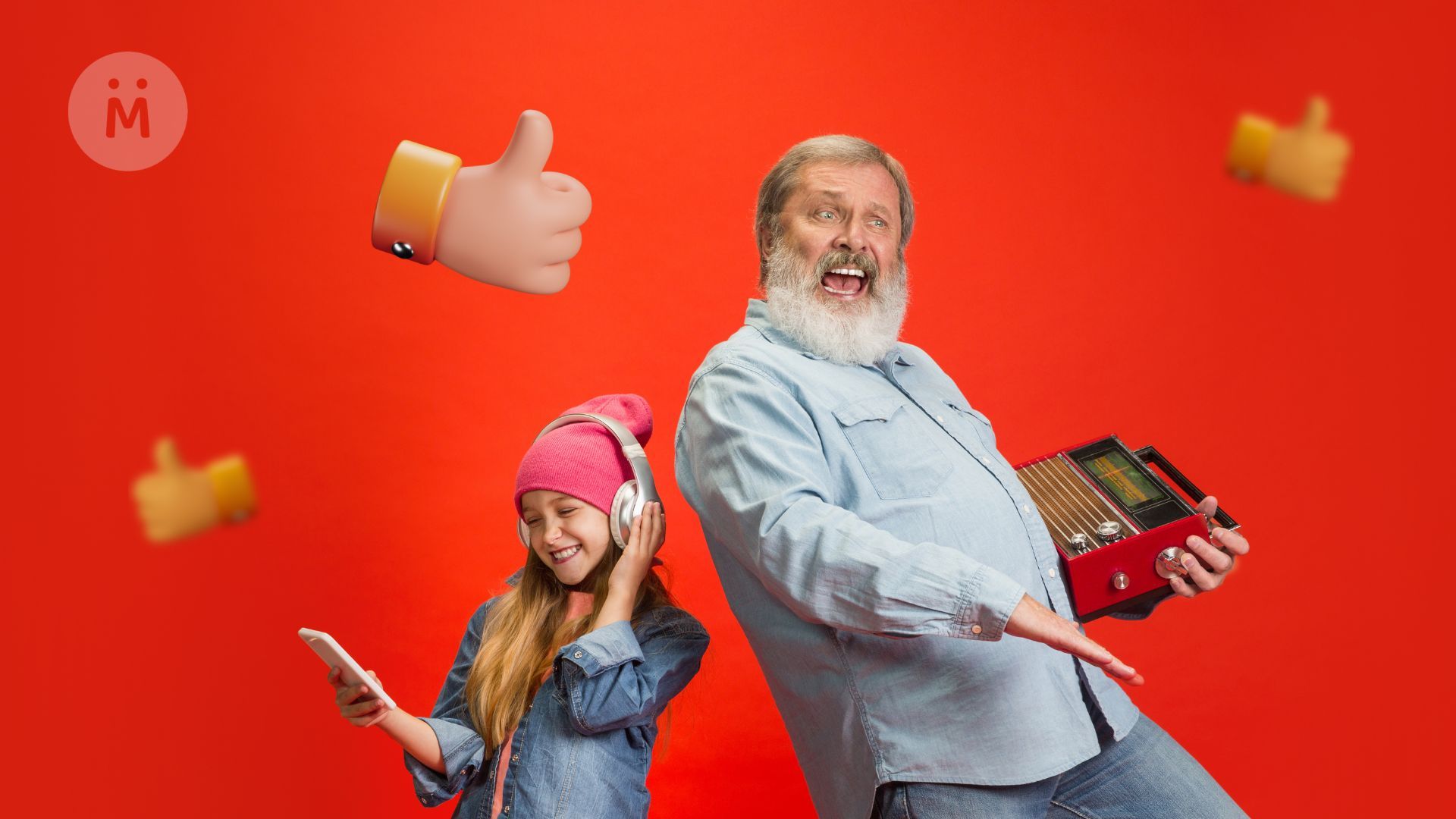Type 9 in Relationships: Attachment Styles of the Peacemaker
Margo Plater
What an Enneagram Type 9 Looks Like in Each of the Attachment Styles
If you’re an Enneagram Type 9, understanding your attachment style can provide valuable insights into how you relate to others and manage your need for peace and harmony. The Enneagram identifies nine distinct personality types, each with its unique motivations, fears, and behaviors. For Type 9, known as "The Peacemaker," these traits are closely tied to your desire for inner and outer tranquility, and your tendency to avoid conflict. By exploring how your Type 9 personality interacts with different attachment styles—secure, anxious, avoidant, and disorganized—you can gain a deeper understanding of your relationships and personal growth.

Understanding Enneagram Type 9: The Peacemaker
As a Type 9, you are driven by a desire to maintain peace and harmony both within yourself and in your environment. You often strive to avoid conflict and may go along with others’ wishes to keep the peace, sometimes at the expense of your own needs and desires. Your biggest fear is conflict and disconnection, which can lead to a tendency to numb out or disconnect from your own feelings and desires to avoid rocking the boat. While your calm and accommodating nature makes you a comforting presence in relationships, you might struggle with assertiveness, self-neglect, and the ability to express your true feelings.
Introduction to Attachment Styles
Your attachment style, shaped by early interactions with caregivers, influences how you relate to others as an adult. The four main attachment styles are:
Secure Attachment: You feel confident and secure in relationships, allowing for healthy, balanced connections.
Anxious Attachment: You may fear abandonment and seek constant reassurance, feeling insecure in your relationships.
Avoidant Attachment: You value independence and self-sufficiency, often distancing yourself emotionally from others to avoid vulnerability.
Disorganized Attachment: Your relationships may feel chaotic and unpredictable. You might crave closeness and intimacy, but at the same time, fear it, leading to confusing and inconsistent behaviors in your interactions with others.
Type 9 with Secure Attachment
If you have a secure attachment style, your natural inclination towards peace and harmony is balanced by a healthy sense of self-worth and assertiveness. You understand that maintaining inner peace doesn’t require avoiding conflict or suppressing your own needs. This secure foundation allows you to engage in relationships with confidence, knowing that your presence and opinions are valued.
With a secure attachment, you’re able to maintain harmony in your relationships while also expressing your true feelings and desires. You can navigate conflicts with grace, understanding that disagreements don’t threaten your relationships but can actually strengthen them when handled constructively. This balance ensures that your relationships are both peaceful and fulfilling, allowing you to connect deeply with others without sacrificing your own identity.
In relationships, your secure attachment allows you to communicate openly and honestly, without fear of disrupting the harmony. You trust that your partner values your opinions and that you don’t need to avoid conflict to maintain the relationship. This mutual respect fosters a relationship where both partners feel heard, understood, and valued. Your ability to combine a desire for peace with emotional strength makes your relationships both stable and nurturing.
Type 9 with Anxious Attachment
If you identify with an anxious attachment style, your desire for peace and connection might be coupled with a deep-seated fear of abandonment or rejection. You may find yourself constantly seeking reassurance from others, worrying that if you don’t keep the peace or agree with others, you might lose their love or approval. This fear can lead to a preoccupation with your relationships, where you’re always striving to maintain harmony, often at the expense of your own needs.
In relationships, this anxiety can manifest as insecurity or a fear of being disconnected from your partner. You might become overly focused on keeping the peace, avoiding conflict at all costs, and going along with whatever your partner wants to avoid any potential disagreement. This can create tension, as your partner may feel that you’re not fully expressing your true self or that you’re too passive in the relationship.
Your fear of abandonment might also make it difficult for you to assert your own needs or desires. You might find yourself constantly accommodating others, even when it means sacrificing your own happiness or well-being. While your intentions are rooted in a desire to keep the relationship harmonious and connected, this anxious attachment can create stress and strain, as your partner may struggle to understand your true feelings and needs.
Type 9 with Avoidant Attachment
If you lean towards an avoidant attachment style, your natural tendencies as a Type 9 might lead you to distance yourself emotionally from others to maintain your inner peace. You may find it challenging to fully engage in relationships, preferring to keep things calm and superficial rather than risking conflict or emotional intensity.
In relationships, your avoidant attachment style might cause you to keep others at a distance, fearing that emotional closeness could lead to conflict or disrupt your sense of peace. You might avoid discussing your deeper emotions or needs, believing that doing so could lead to arguments or discomfort. This can lead to a sense of emotional detachment, as your relationships may lack the depth and intimacy that come from mutual vulnerability and trust.
Your avoidance of emotional closeness can also make it difficult for others to connect with you on a deeper level. You might retreat into a passive, agreeable stance, using it as a way to avoid difficult emotions or uncomfortable situations. This can create a dynamic where you are physically present but emotionally distant, leading your partner to feel disconnected or unsure of where they stand with you.
To build more fulfilling relationships, it’s important to recognize that conflict and emotional connection do not have to threaten your sense of peace. Learning to balance your desire for harmony with the need for emotional honesty can help you develop deeper, more meaningful relationships without feeling overwhelmed. Therapy or relationship coaching can be particularly helpful in addressing avoidant attachment patterns and finding a balance between your need for peace and your desire for connection.
Type 9 with Disorganized Attachment
If you have a disorganized attachment style, you might experience a push-pull dynamic in your relationships, where you alternate between craving connection and fearing emotional intensity or conflict. This can lead to confusing and inconsistent behaviors, where you sometimes withdraw to maintain your sense of peace and at other times seek closeness to feel secure and connected.
Emotionally, this can be exhausting, as you struggle with conflicting desires and fears. You might find it difficult to trust others, unsure whether they will respect your need for peace or push you into uncomfortable emotional situations. This inner conflict can make it challenging to form stable, secure relationships, as you’re constantly torn between wanting to connect deeply and fearing the disruption that emotional intensity might bring.
In relationships, this disorganized attachment might lead to a pattern of intense but unstable connections. You might find yourself becoming overly passive or compliant in moments of fear or doubt, only to withdraw or shut down when things become too emotionally demanding. This can create a cycle of emotional highs and lows, where you’re constantly trying to navigate your conflicting needs for peace and connection.
Your fear of conflict or emotional intensity might also lead you to avoid deep engagement in your relationships, either by retreating to maintain your sense of peace or by becoming overly agreeable to keep others happy. This can create tension and instability in your relationships, as your partner might feel confused or unsure of how to meet your needs.
To manage these challenges, it’s important to work on developing a more secure sense of self and a stable approach to relationships. Therapy can be particularly helpful in addressing disorganized attachment patterns, providing you with the tools and support you need to develop healthier ways of relating to yourself and others. Mindfulness practices, self-compassion, and learning to trust both yourself and others can also play a crucial role in your journey towards more stable, fulfilling relationships.
How Childhood Influences the Development of Attachment Styles in Type 9
Your attachment style often traces back to your childhood experiences. If you grew up in an environment where your needs for peace and harmony were either overly emphasized or disregarded, you might have developed an anxious attachment style, constantly seeking reassurance and fearing conflict. Conversely, if your caregivers were inconsistent—sometimes supportive and at other times emotionally distant or overwhelming—you might have developed an avoidant or disorganized attachment style, leading to a complicated relationship with conflict and emotional connection.
These early experiences can shape how you approach relationships in adulthood, influencing your need for peace, your comfort with emotional intensity, and your ability to assert your needs. Understanding how your childhood environment influenced your attachment style can be a crucial step in breaking unhelpful patterns and fostering healthier connections.
The Role of Stress and Growth
Stress can significantly amplify the characteristics of both your Enneagram type and your attachment style. As a Type 9, stress might heighten your desire to avoid conflict and maintain peace, leading you to withdraw even further from emotional engagement or become overly compliant to keep others happy. Depending on your attachment style, you might cope with stress by seeking reassurance from others, withdrawing into passivity, or oscillating between these extremes.
If you’re securely attached, you might handle stress by balancing your need for peace with the ability to engage in difficult conversations and assert your needs. However, if you have an anxious attachment style, stress might exacerbate your fears of abandonment or rejection, leading to increased compliance or reassurance-seeking. For those with an avoidant attachment style, stress might trigger a retreat into emotional detachment, making it harder to connect with others or assert your needs.
Understanding these dynamics can be a powerful tool for growth. By recognizing how your attachment style interacts with your Type 9 traits under stress, you can develop strategies to manage stress more effectively and maintain emotional balance. This might involve therapy, mindfulness practices, or learning to set and maintain healthy boundaries.
Self-Awareness and Transformation
Self-awareness is crucial for transforming your attachment style and integrating it with your Enneagram Type 9 traits in a healthy way. By understanding the interplay between your desire for peace and your attachment-related behaviors, you can start making conscious choices that lead to healthier, more balanced relationships.
Mindfulness can be a powerful tool in this process, helping you observe your thoughts and emotions without judgment. For a Type 9, this means becoming aware of when you’re avoiding conflict or numbing out to maintain peace and learning to engage more fully in your relationships.
Setting boundaries is another crucial aspect of this transformation. As a Type 9, you might struggle with balancing your desire for harmony with the need to assert your own needs and desires. Learning to set and maintain healthy boundaries allows you to protect your well-being while still engaging in meaningful relationships. It also helps you create more balanced relationships, where both you and your partner’s needs are respected and valued.
Type 9’s Desire for Peace and Attachment Styles
Your desire for peace, harmony, and avoidance of conflict is a core part of being a Type 9, but it can manifest differently depending on your attachment style. If you’re securely attached, you’re likely to balance your need for peace with the ability to assert yourself and engage in healthy conflict. If you have an anxious attachment style, you might struggle with fears of abandonment or rejection, leading to a constant need to keep the peace at all costs. If you’re avoidantly attached, you might distance yourself emotionally, prioritizing your need for tranquility over connection.
For those with a disorganized attachment style, your desire for peace might be mixed with a fear of emotional intensity or conflict, leading to inconsistent behaviors in your relationships. Learning to balance your desire for peace with the need for emotional connection is key to achieving true fulfillment as a Type 9.
Practical Steps for Personal Growth
If you’re looking to move towards a more secure attachment style, here are some practical steps you can take:
Therapy: Working with a therapist can help you explore the roots of your attachment style and develop healthier patterns of relating to others.
Mindfulness: Practicing mindfulness can help you become more aware of your thoughts and emotions, allowing you to respond rather than react.
Self-Compassion: Learning to treat yourself with the same kindness and understanding you would offer a friend can help you embrace your vulnerabilities and manage your fears.
Setting Boundaries: Learning to set and maintain healthy boundaries is crucial for balancing your need for peace with the need for self-care and healthy relationships.
Relationship Skills: Building skills like active listening, empathy, and open communication can help you create more balanced and fulfilling relationships.
Key Takeaways
The interaction between your Enneagram Type 9 personality and attachment style offers a nuanced understanding of how your traits influence your relationships and self-perception. By exploring these dynamics, you can gain valuable insights into your behaviors and take steps toward personal growth and healthier connections with others. Your journey of self-discovery is ongoing, but with awareness and intention, you can learn to balance your desire for peace and harmony with meaningful relationships, self-compassion, and emotional resilience.



